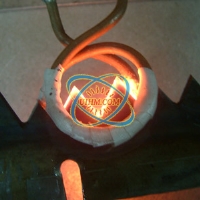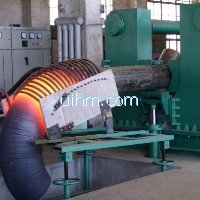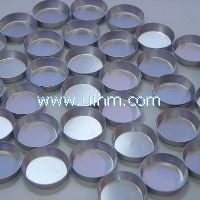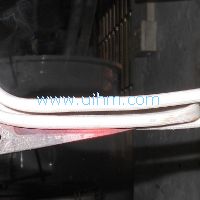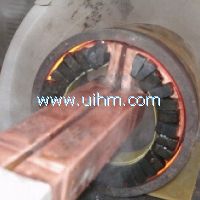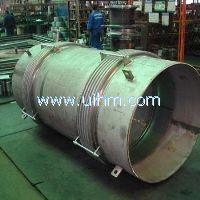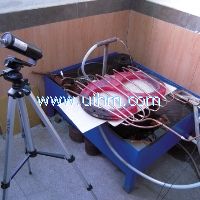Induction heating is often used in the heat treatment of metal items. The most common applications are induction hardening of steel parts, induction soldering/brazing as a means of joining metal components and induction annealing to selectively soften an area of a steel part.
Induction heating can produce high power densities which allow short interaction times to reach the required temperature. This gives tight control of the heating pattern with the pattern following the applied magnetic field quite closely and allows reduced thermal distortion and damage.
This ability can be used in hardening to produce parts with varying properties. The most common hardening process is to produce a localised surface hardening of an area that needs wear-resistance, while retaining the toughness of the original structure as needed elsewhere. The depth of induction hardened patterns can be controlled through choice of induction-frequency, power-density and interaction time.
Limits to the flexibility of the process arise from the need to produce dedicated inductors for many applications. This is quite expensive and requires the marshalling of high current densities in small copper inductors, which can require specialized engineering and 'copper-fitting'.
Induction heating can produce high power densities which allow short interaction times to reach the required temperature. This gives tight control of the heating pattern with the pattern following the applied magnetic field quite closely and allows reduced thermal distortion and damage.
This ability can be used in hardening to produce parts with varying properties. The most common hardening process is to produce a localised surface hardening of an area that needs wear-resistance, while retaining the toughness of the original structure as needed elsewhere. The depth of induction hardened patterns can be controlled through choice of induction-frequency, power-density and interaction time.
Limits to the flexibility of the process arise from the need to produce dedicated inductors for many applications. This is quite expensive and requires the marshalling of high current densities in small copper inductors, which can require specialized engineering and 'copper-fitting'.
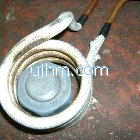
induction heating bolt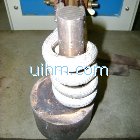
induction heating steel rod by UM-40AB-HF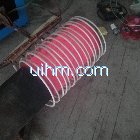
induction heating end of pipeline by 160kw induction heater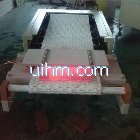
induction heating steel plates by auto feed system with 120KW induction heater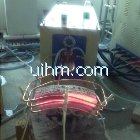
induction heating cambered work-piece by 160KW power supply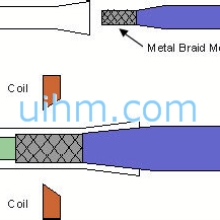
Induction heating for Plastic Reflow With Catheter Tubing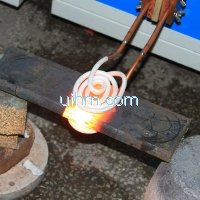
U shape induction coil for heating hole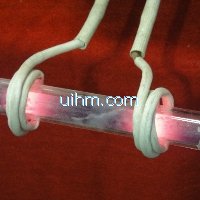
induction heating steel rod with double coils
induction heating steel mould
induction heating steel plate by rectange induction coil
induction heating inner bore of auto part by 120KW induction heater (UM-120AB-RF)
induction heating cemented carbide knife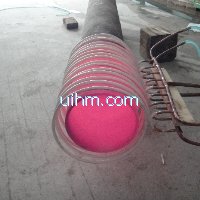
induction heating big steel pipe
induction heating auto leaf spring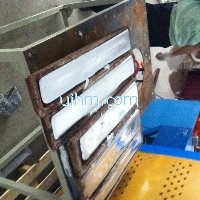
induction forming aluminium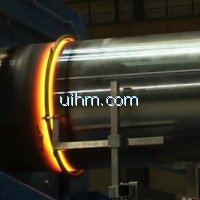
induction bending steel Pipe and Tube for nuclear electric plant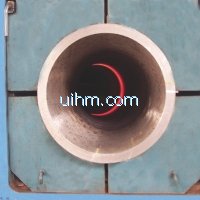
induction bending pipeline for nuclear electric plant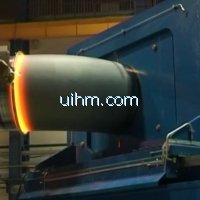
induction bending pipe for nuclear electric plant
 induction heating bolt Class: Induction Thermal Treatment
induction heating bolt Class: Induction Thermal Treatment Intro: induction heating bolt
 induction heating steel rod by UM-40AB-HF Class: Induction Thermal Treatment
induction heating steel rod by UM-40AB-HF Class: Induction Thermal Treatment Intro: induction heating steel rod by UM-40AB-HF
 induction heating end of pipeline by 160kw induction heater Class: Induction Thermal Treatment
induction heating end of pipeline by 160kw induction heater Class: Induction Thermal Treatment Intro: induction heating end of pipeline by 160kw induction heater
Press←or→to turn page


